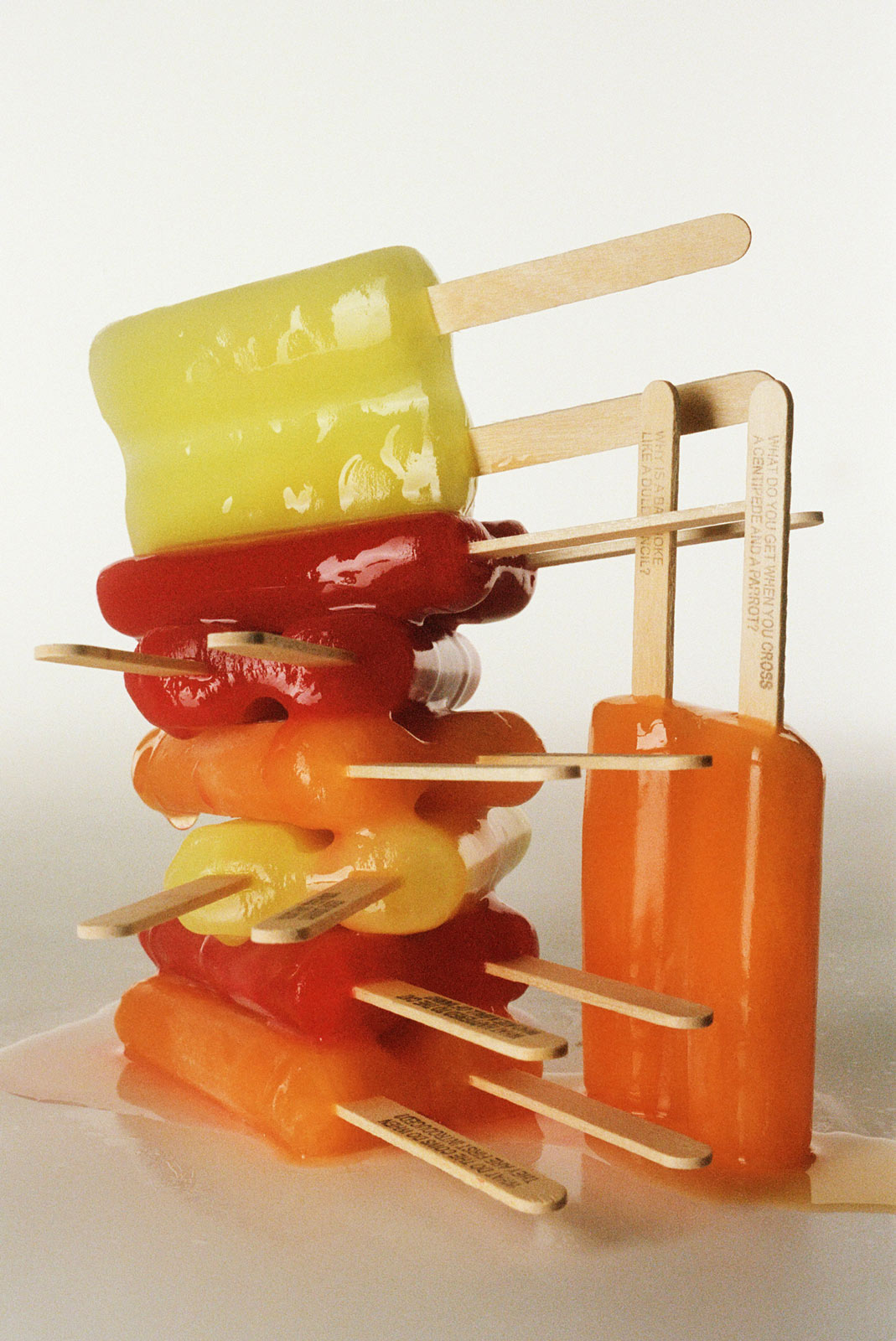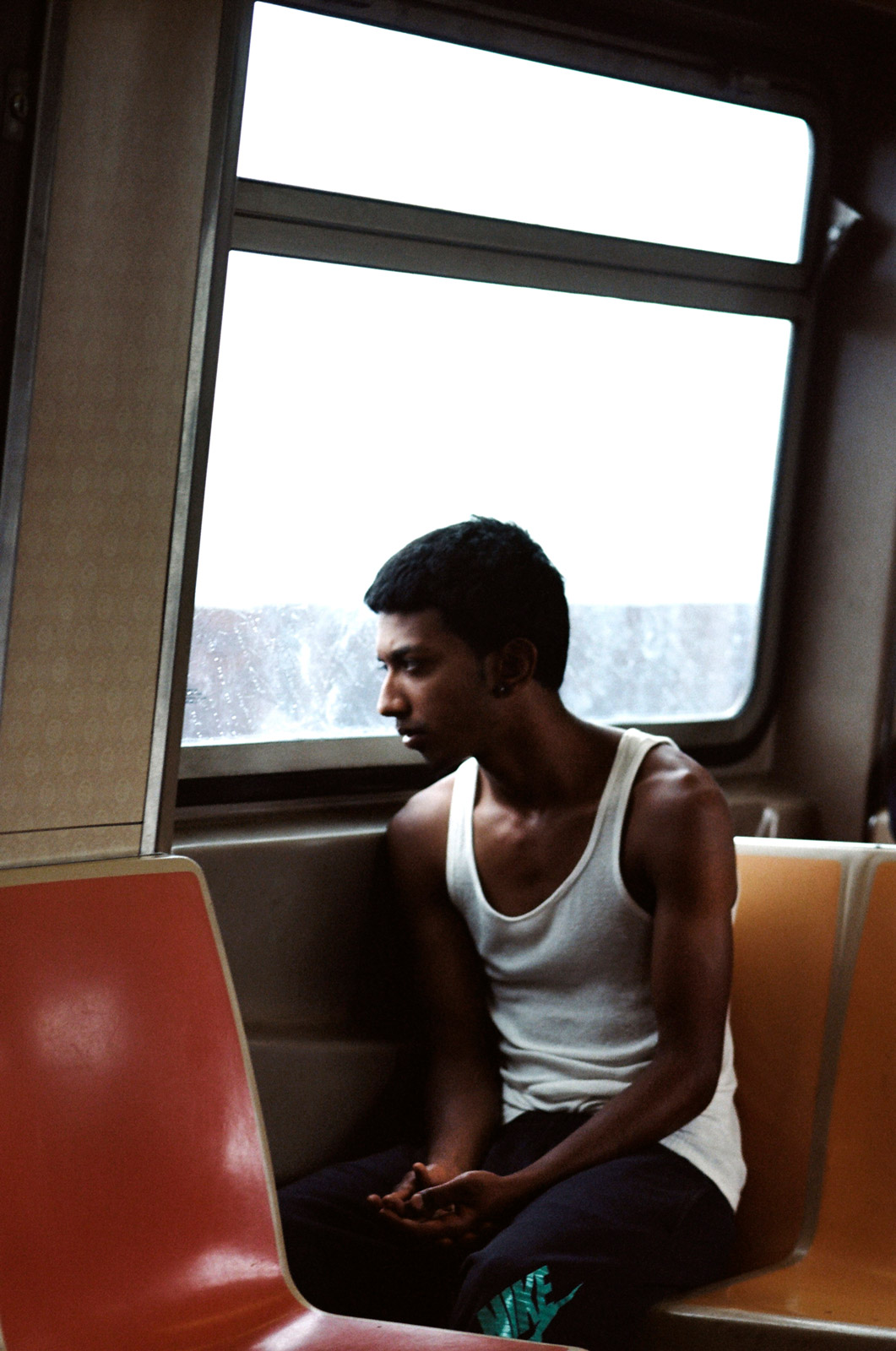Upon the release of ‘Dream About Nothing,’ the photographer joins Document to unpack his methodology
“The most boring person you know, to some extent, has a special relationship with their colander,” Bobby Doherty says. “What I do is the same as that.” In Dream About Nothing, the mundane and the remarkable are offered the same regard. The act of equalizing the two is instinctual for the photographer, and maybe natural, he supposes, for the world at large; but it’s that very thing that has made his artistic language distinct.
There is no foreground or background to Doherty’s images. His forthcoming photobook places everything in focus, in both a figurative and literal sense: His subjects range from strange to standard, all presented with crystalline definition. He portraits popsicles melting into one another, eyelashes sloppily attached to fingertips, a scab in the sheerest stages of healing, an empty box on the sidewalk, a flower draped upside down against a bundle of garlic.
Doherty portraits people, too—his human subjects depicted with the same regard as his inanimate ones. Through his eye, even the most everyday items, the most familiar faces, are rendered alien: as peculiar as they are provocative, simultaneously clear and disarming.
Upon the release of Dream About Nothing, via Loose Joints, Doherty joins Document to unpack his methodology.
Megan Hullander: Your output is fairly prolific and feels even more so given the extent to which concept plays a part in your work. What is the pace of your process like, and where do you find energy within it?
Bobby Doherty: Taking lots and lots of photos is the only way I know how to get to a good photo. When something isn’t working, it’s exciting to figure out why. I love looking at the set and thinking about what it’s trying to say. It feels like it’s my job to tell the story of these things. I’m translating total nonsense, but I feel lucky to have this little internal world of rules and values that dictate what is and isn’t a photo I would make.
Megan: How do you think clarity can confuse how we approach an image or idea?
Bobby: I want my photos to be clear because I want them to be understood immediately. I don’t really care how they’re interpreted.
Megan: In the title, it feels like dream carries more weight than nothing—do you imagine those words existing outside of, or in particular parts of, their definitions?
Bobby: My dreams intensely influence my waking life. I don’t really enjoy them. Most of my dreams are totally enigmatic and I spend the majority of my day stuck in the emotional space I was dreaming in. I wanted the book to feel like an unexplainable dream where you wake up very affected, but the narrative feels so deeply lodged in you that it’s completely inarticulable. I think the word dream raises you up, and then nothing brings you back down. I can wake up completely devastated by a dream, in awe that my mind was able to materialize something so disturbing and confounding, and only be able to tell you that it was mostly about nothing. Nothing can feel this way.
Megan: What attracts you to a subject? Is there anything that you consider to actually be mundane—without altering the definition of the word itself?
Bobby: I really don’t think about this kind of stuff. I assume everyone projects personalities onto inanimate objects. It feels like an inherent human quality that we need in order to survive. Nothing is mundane and the most boring person you know, to some extent, has a special relationship with their colander. What I do is the same as that.
Megan: Are there ways that you think your photographic practice has impacted how you live in the everyday?
Bobby: When I was very young, I decided I was going to be a photographer and I still am. I’ve yet to know life without a camera.
Dream About Nothing by Bobby Doherty is published by Loose Joints.



















